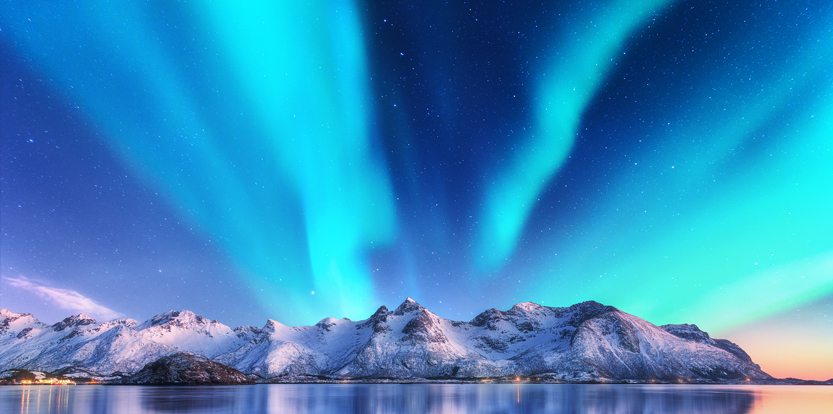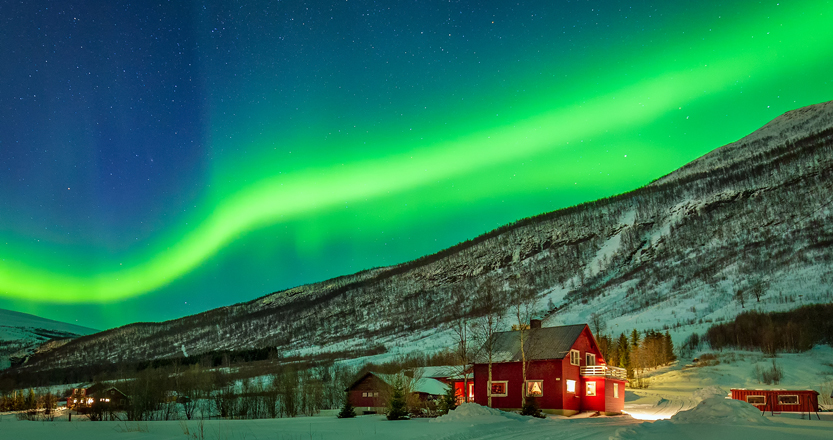Destination Search
-
The UK's largest accessible holiday specialist
-
Guaranteed accessible accommodation
-
Many properties personally audited
-
Flights, adapted transfers & equipment hire
Accessible Northern Lights Holidays

See the most spectacular natural show on earth!
The Northern Lights is one of the most incredible natural sights in the world and a dream experience for many holidaymakers.
An amazing, dynamic spectacle that illuminates the sky in a riot of colour, its otherworldly magic has inspired myths and legends for millennia – and it’s no less captivating today. Every year, the Aurora Borealis draws visitors to the far north from around the globe and rewards them with a truly magical and moving encounter they will never forget.
Where to see the Northern Lights

The Northern Lights are most frequently visible in the Aurora Oval, a vast band that stretches around the globe between 66°N and 69°N. In Europe this means the top locations for seeing the Lights are the northern parts of Norway, Sweden and Finland, plus Iceland; while farther afield there are also excellent viewing conditions in Canada, Alaska, Russia and Greenland. They’re visible even farther north too, in places like Svalbard, and sometimes even as far south as the north coast of Scotland.
Strictly speaking, there’s no “best” country in which to see the lights – the Aurora looks magnificent in all of them, so deciding where to go comes down to personal preference, budget and your level of accessibility requirements. Speak with our expert travel agents to find the perfect place for you!
One other thing to consider is that light pollution from big cities can negatively affect the visibility of the Northern Lights, so the best experiences are often found in more remote locales. This doesn’t mean you’ll have to be camping out in the middle of nowhere, though. A typical accessible Northern Lights experience can involve staying in a comfy hotel during the day and heading out to the countryside to see the lights on an evening tour.
When to see the Northern Lights

The Northern Lights appear from late August to mid April; however, your chances of a good sighting will be significantly increased from late September to late March when there is less daylight.
December and January bring the darkest conditions, often with only a couple of hours of daylight (or polar light) each day; however, it will be slightly milder from September to November and February to March. In these months you’ll have a chance of seeing the lights from 6 p.m. to 4 a.m., with the highest probability at around 10 p.m. to 11 p.m.
Don’t forget!
Northern Lights holidays are cold! (Yes, we know that sounds obvious, but it has to be said!) Conditions will naturally vary a lot depending on your destination, but wherever you go you’ll need to wrap up warm. We suggest dressing with base layers, coats, scarves, hats and gloves, as temperatures will usually be well below freezing.
Another thing to remember is that Northern Lights sightings are dependent on weather conditions, meaning no holiday is 100% guaranteed to get you a clear view of the lights. As such it can be a good idea to make your trip about more than just seeing the lights. Think husky sledding, visiting Santa, moose and reindeer encounters and accessible skiing!




